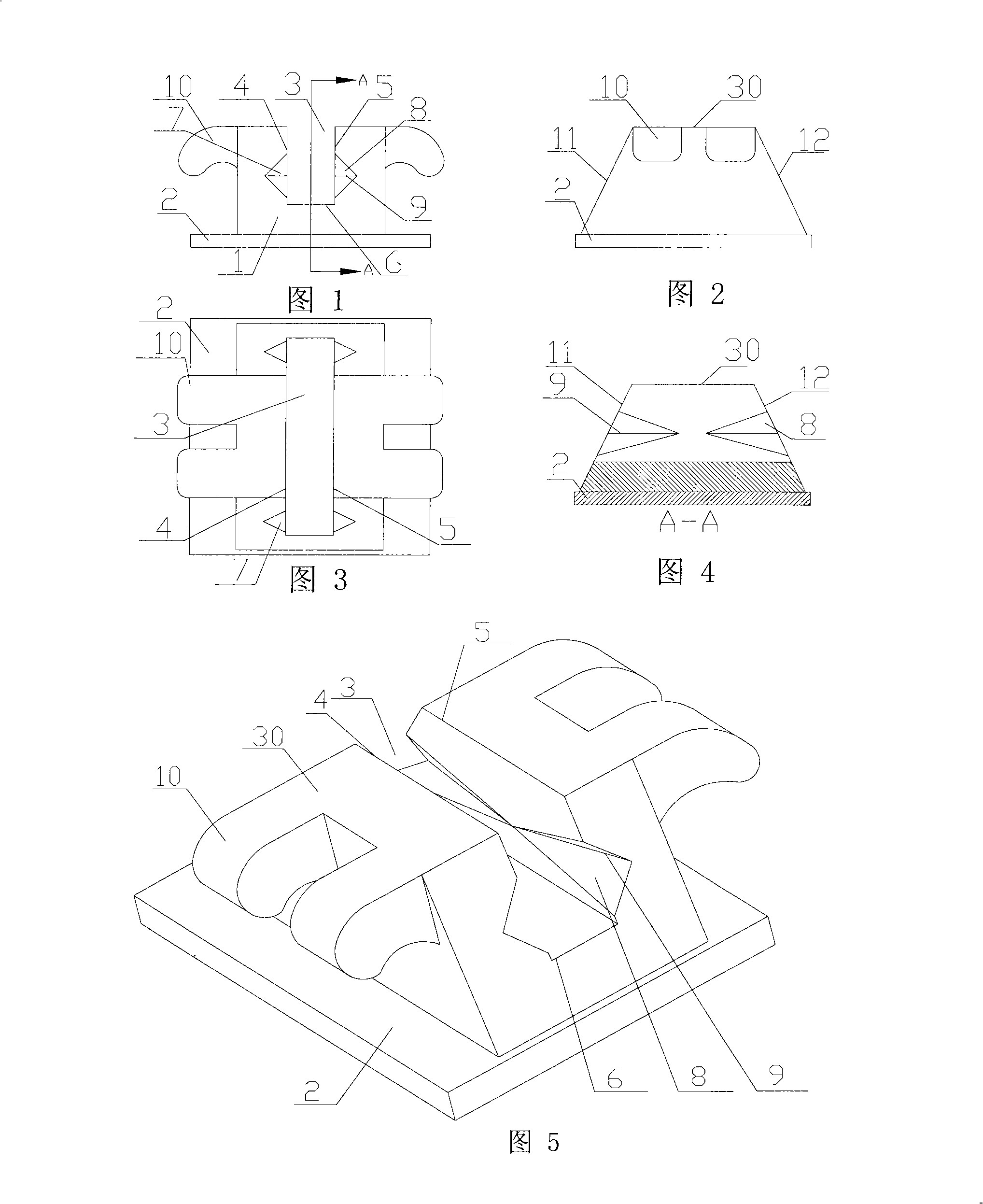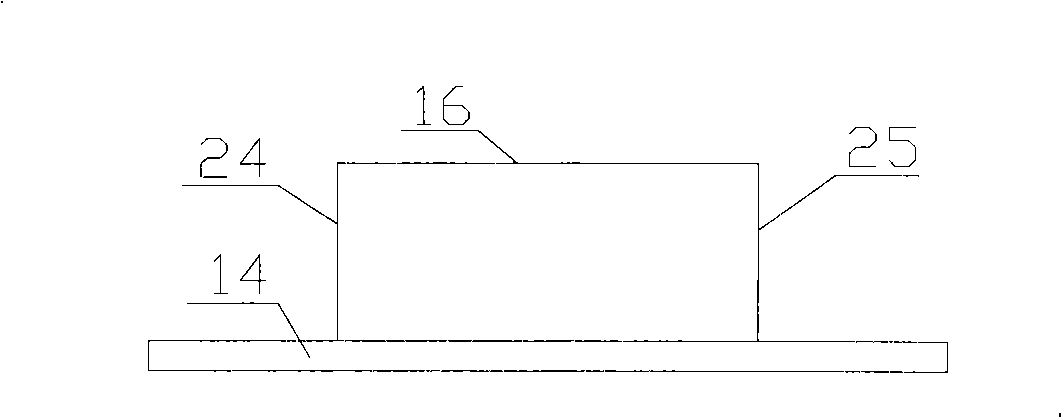Teeth appliance
A dental appliance and tooth surface technology, applied in the field of orthodontic devices, can solve the problems of reducing the degree of freedom of the dental arch wire, unfavorable movement of the dental arch wire, troubles, etc.
- Summary
- Abstract
- Description
- Claims
- Application Information
AI Technical Summary
Problems solved by technology
Method used
Image
Examples
Embodiment 1
[0075] The present embodiment comprises buccal tube, bracket, dental arch wire and ligation device, with reference to accompanying drawing 1, Fig. 2, Fig. 3, Fig. 4 and Fig. 5, bracket is made of bracket body 1 and base 2 two parts, and base 2. Connected with the surface of the teeth, the bracket body 1 is provided with an archwire groove 3 that penetrates the mesial and distal and opens in the lip-buccal direction. The archwire groove 3 consists of Square side wall 4, gingival side wall 5 and bottom wall 6, the arch wire groove 3 The square side wall 4 and the gingival side wall 5 have auxiliary grooves 7 opening in the archwire groove 3. The auxiliary grooves 7 are in the mesio-distal direction, and four auxiliary grooves 7 start from the The mesial edge 11 and the distal edge 12 of the square side wall 4 and the gingival side wall 5, the buccal-lingual width of the auxiliary groove 7 of the bracket is smaller than the buccal-lingual width of the square arch wire 29 adopt...
Embodiment 2
[0079] Referring to accompanying drawings 14, 15, 16, and 17, the difference between this embodiment and embodiment 1 is that there are a pair of ligation wings 10 on the side wall of the archwire slot, located at the top 30 of the side wall of the archwire slot, and the method of use is the same as Example 1.
Embodiment 3
[0081] Referring to accompanying drawings 18, 19, 20 and 21, the difference between this embodiment and embodiment 1 is that there are three pairs of ligation wings 10 on the side wall of the archwire slot, one pair is located in the middle of the top 30 of the side wall, and the other two pairs The ligature wings are respectively located at the mesial and distal of the side wall pre-part 30 , and both protrude outward. At this time, when the bracket is ligated by the pair of ligature wings in the middle, the activity of the arch wire in the arch wire slot is relatively large, and the friction between the arch wire and the bracket is small, which is conducive to the movement of the teeth, and at the same time, the dental arch wire is easy to enter The auxiliary groove 7 on the side wall can allow the teeth to move obliquely. When the two pairs of ligating wings on both sides are used for ligating, the activity of the dental arch wire in the arch wire groove is small, which is c...
PUM
 Login to View More
Login to View More Abstract
Description
Claims
Application Information
 Login to View More
Login to View More - R&D
- Intellectual Property
- Life Sciences
- Materials
- Tech Scout
- Unparalleled Data Quality
- Higher Quality Content
- 60% Fewer Hallucinations
Browse by: Latest US Patents, China's latest patents, Technical Efficacy Thesaurus, Application Domain, Technology Topic, Popular Technical Reports.
© 2025 PatSnap. All rights reserved.Legal|Privacy policy|Modern Slavery Act Transparency Statement|Sitemap|About US| Contact US: help@patsnap.com



